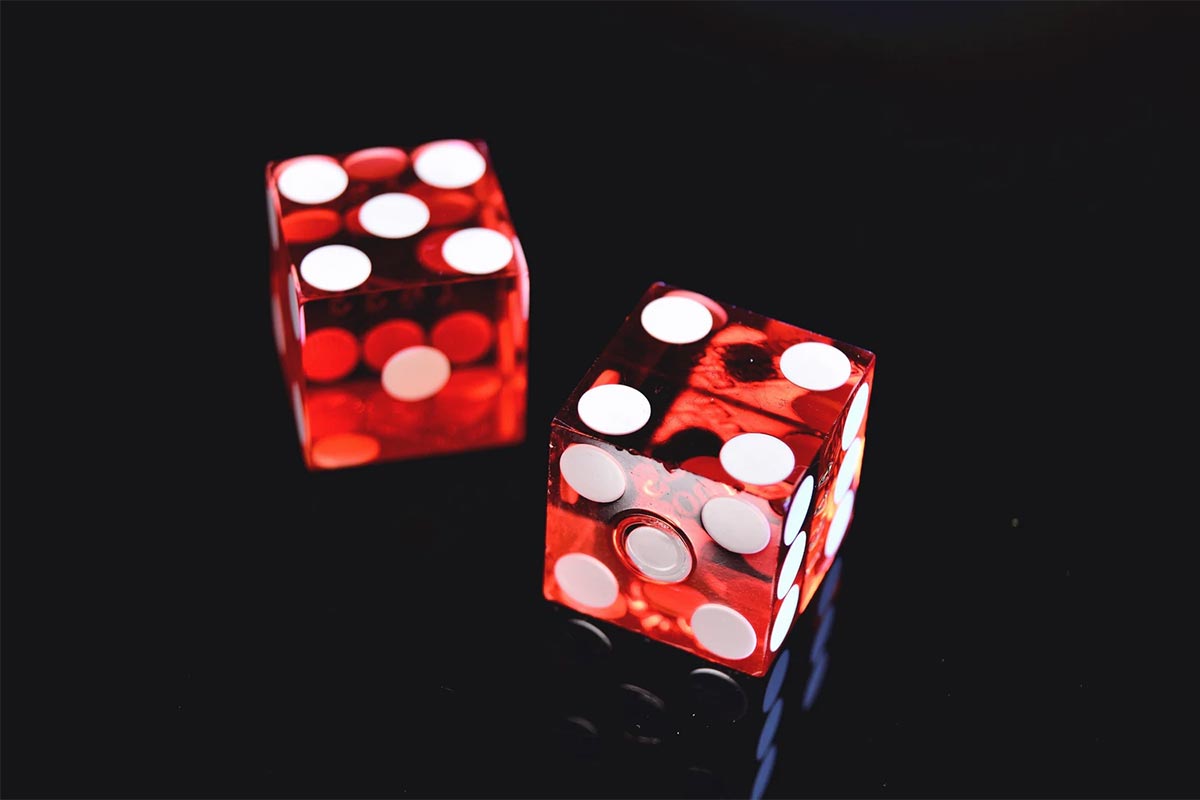When you roll a die, there should be an exact 1 in 6 chance of landing on any given number. However the slightest chip, dent or imperfection can skew the odds and give a gambler an unfair advantage. With so much money on the line, it’s not surprising that casinos will go to great lengths to make sure their dice are in perfect condition.
So how do they test casino dice and prevent cheating? Before we answer that question, let’s look at the different ways people can tamper with dice in order to cheat…
Loaded dice and floaters
If one side of a die is slightly heavier than the rest, there’s an increased chance that it will land with that side face-down. So for example, if the “1” side of the die is heavier than the other sides, there’s a higher chance of rolling a 6 (the opposite number). This is known as having loaded dice. Cheaters could, in theory, drill a small cavity behind one of the numbers and fill it with metal or another heavy material.
The opposite of loaded dice is called a floater. It’s the same idea – if you make one side of the die lighter than the others, that side is more likely to land facing up. This could be done by carefully drilling out material from one side of the die.
Flats
A good, well-made die should be the exact same length across all sides – in other words, each face is perfectly square. When a die has been altered to make two sides slightly larger than the others, it’s known as a flat. The bigger sides are more likely to land face-down, giving cheaters an advantage. Just a slight, almost imperceptible difference in length could be enough to tip the odds in the cheater’s favour.
How do they test casino dice?
In the United States, most casinos follow the standards set out by the New Jersey Casino Control Commission – the body that regulates gambling in Atlantic City.
According to the regulations, dice are to be kept in a locked container until the casino table is open for business. At that point, the dice are handed to the boxperson who must perform a number of tests:
Visual inspection
First comes the visual inspection. The boxperson checks that the opposing sides of the die add up to seven and that each die is marked with a serial number and the logo of the casino. After these preliminary checks, they will also examine the dice for nicks, chips, scratches, burrs or any other evidence of tampering.
Measurements
If the dice pass the visual test, the boxperson moves on to a series of measurements. An electronic micrometer is used to precisely measure the length of each side to ensure there are no flats. They will also use a steel set square to make sure each corner is an exact right angle. Finally, a magnet is used to check if any metal has been added to load the dice.
Only when the boxmaster is satisfied can the dice be used in any casino games.
Other security measures
Over the years casinos have developed a number of clever security measures to make sure dice haven’t been tampered with. We’ve listed a few below:
Sharp corners
Next time you get out a family board game, take a look at the dice – chances are they will have rounded corners. But casino dice always have nice sharp corners.
Round corners are unlikely to be perfectly symmetrical and can exaggerate any bias in the dice. They can also grip and slide on the table.
Translucent plastic
Since the 1950s casino dice have been made with semi-transparent (translucent) plastic. This allows casino staff to see inside the dice and quickly tell if they are loaded or have been tampered with.
Change-outs
Just like decks of cards at a blackjack table, dice are routinely swapped out with a fresh set. This minimises the risk of chips and imperfections affecting the dice, and makes it more difficult to sneak in an altered set of dice.
Backfilling
The dots on a die, known as ‘pips’, can affect the shape and weight of the dice. To combat this, holes are drilled into the surface and the pip is placed inside (keeping the side of the die perfectly flat). Dice manufacturers make sure that the white paint used for the pips has the exact same weight & density as the rest of the die.
Cancellation
When it’s time to dispose of old dice, the casino will use a machine to punch a round hole into one side of the die. This gives casinos a quick & easy way to identify retired dice that have been snuck back onto the table.
So there you have it! Casinos go to extraordinary lengths to test their dice, keep their games fair and combat cheating!





